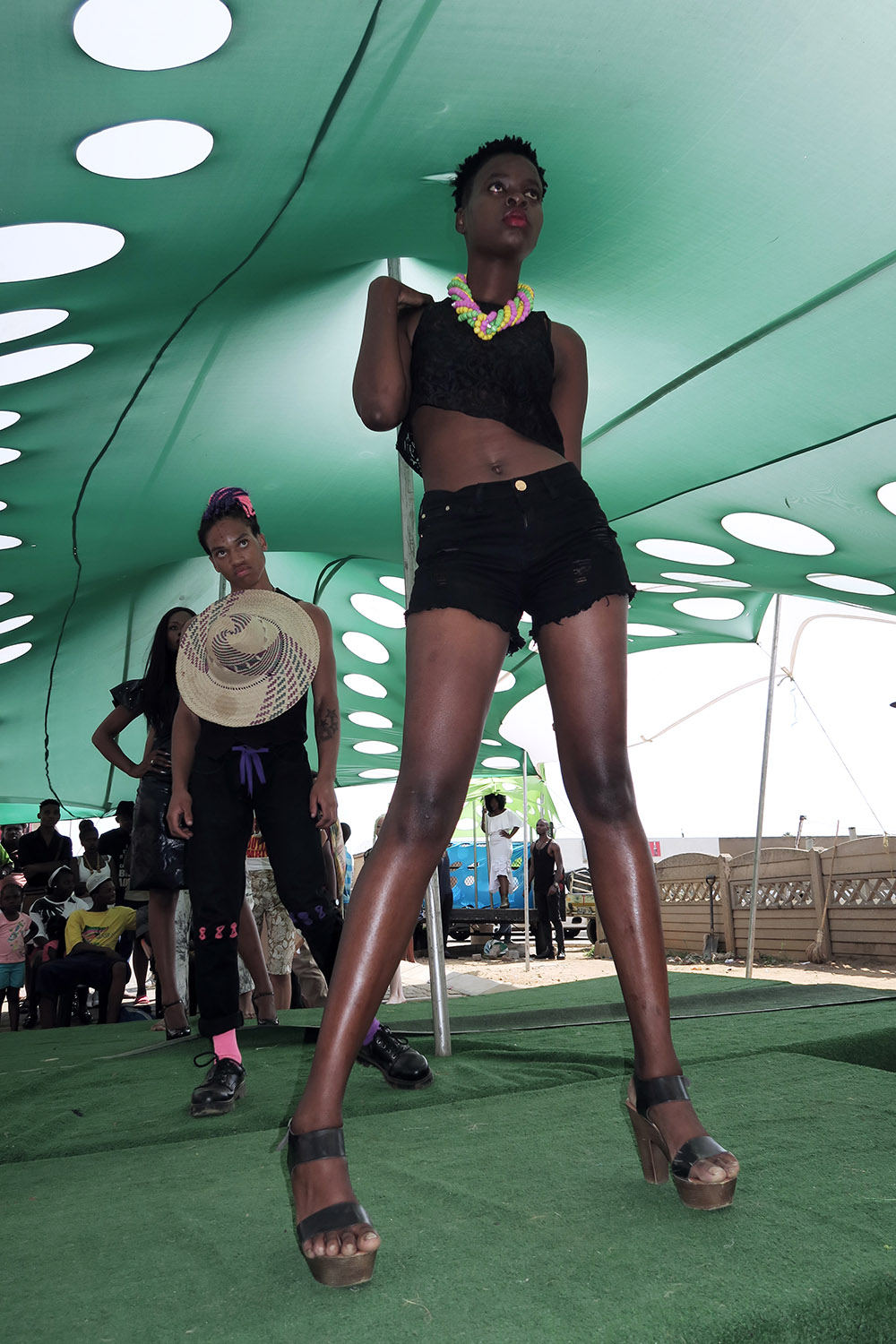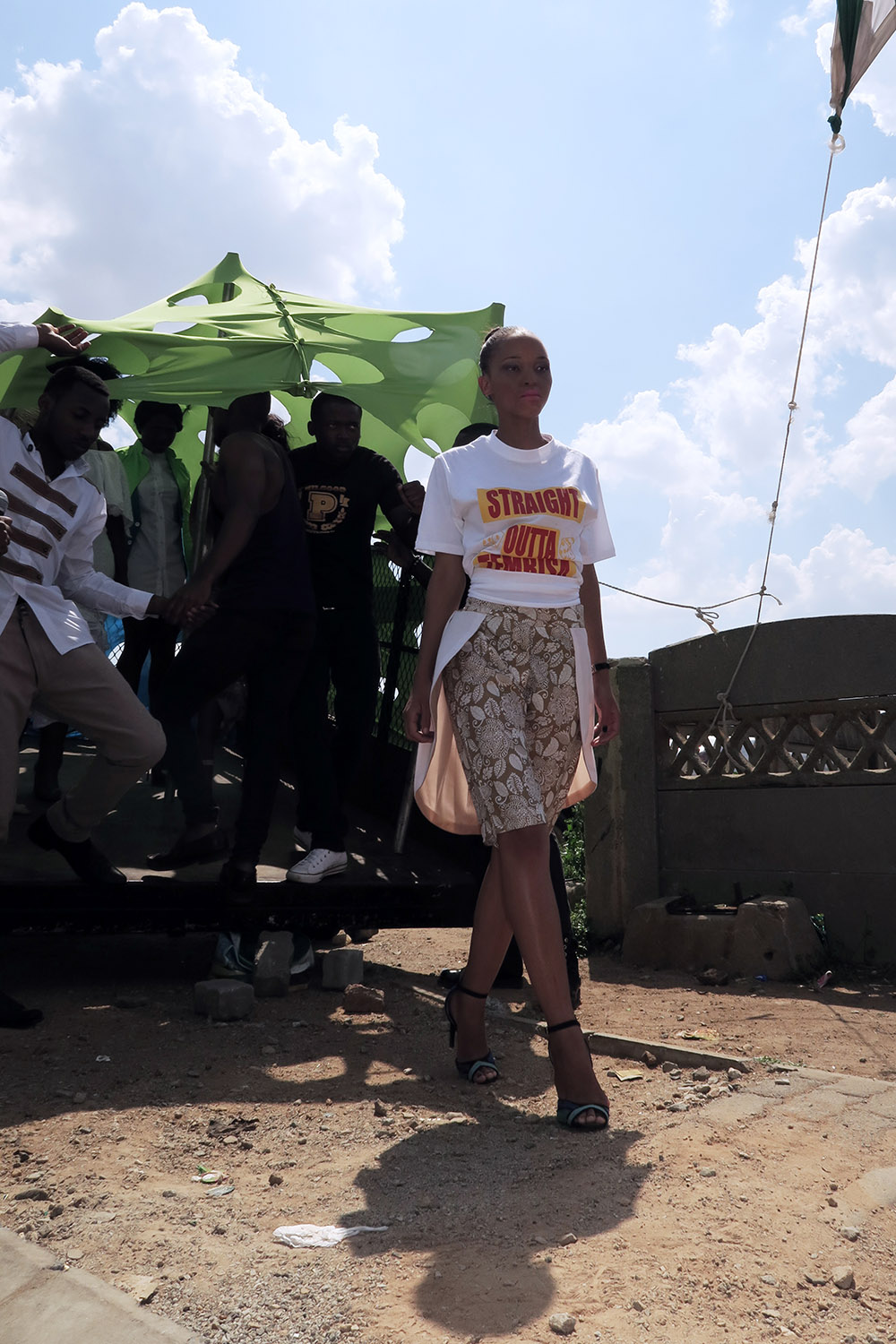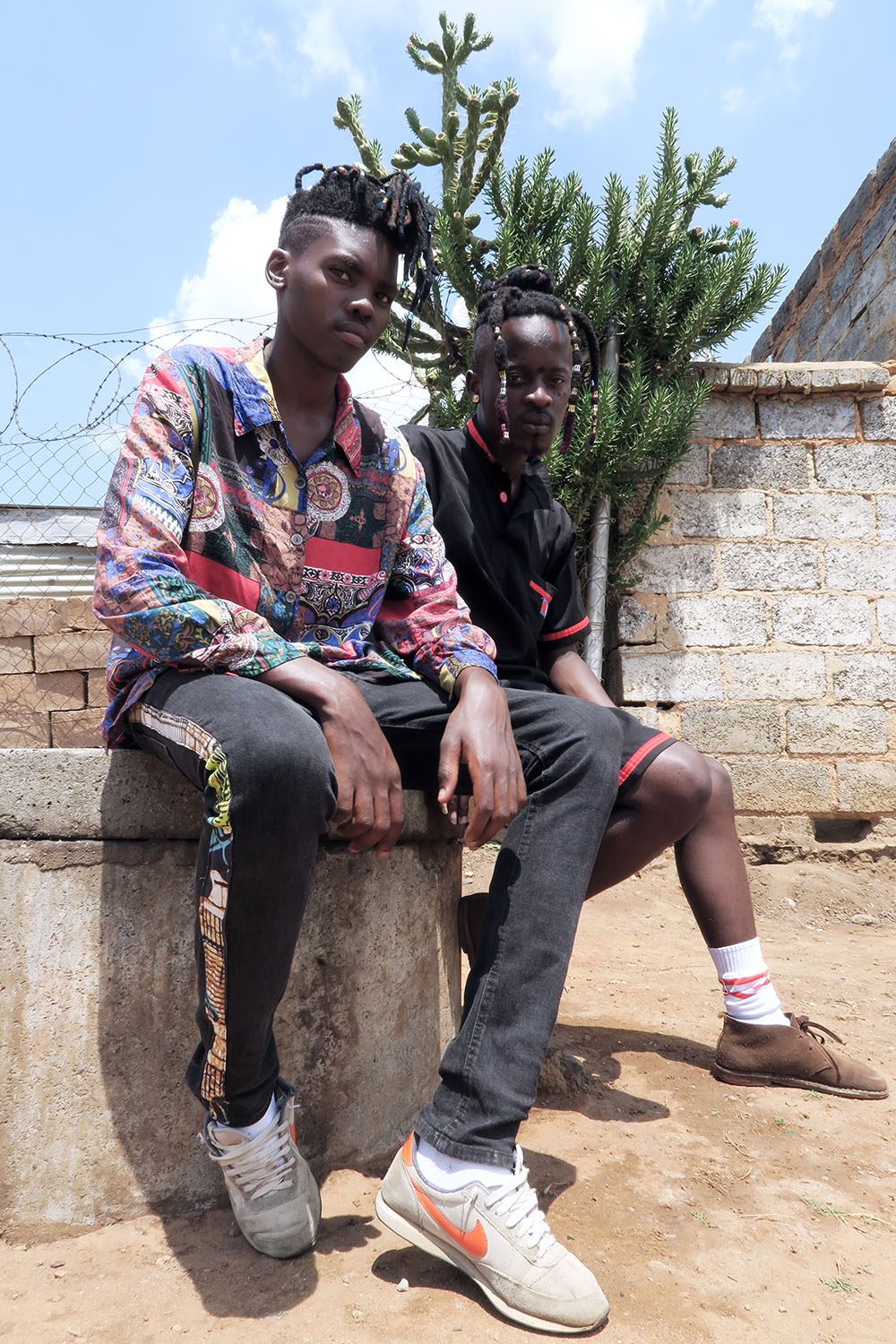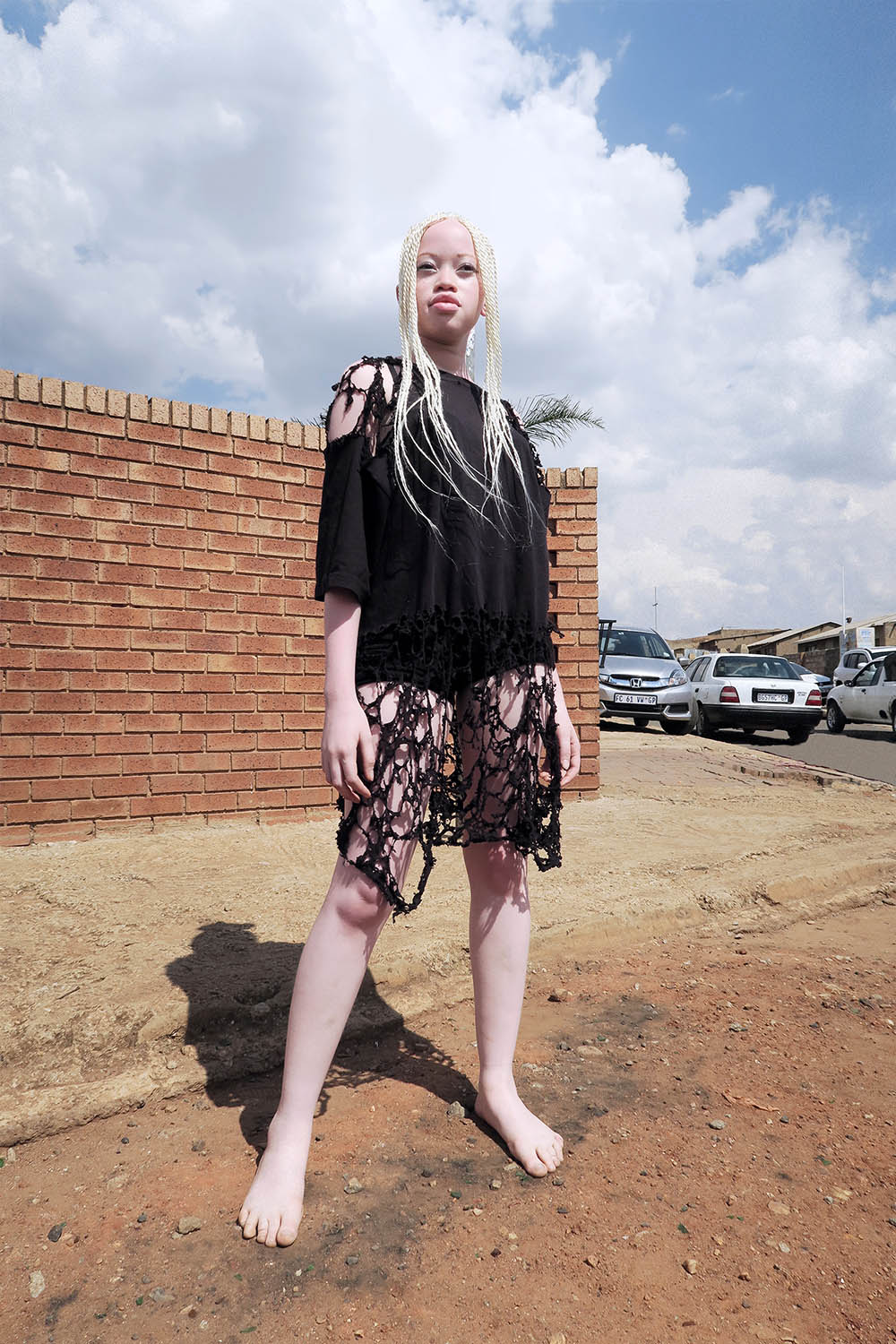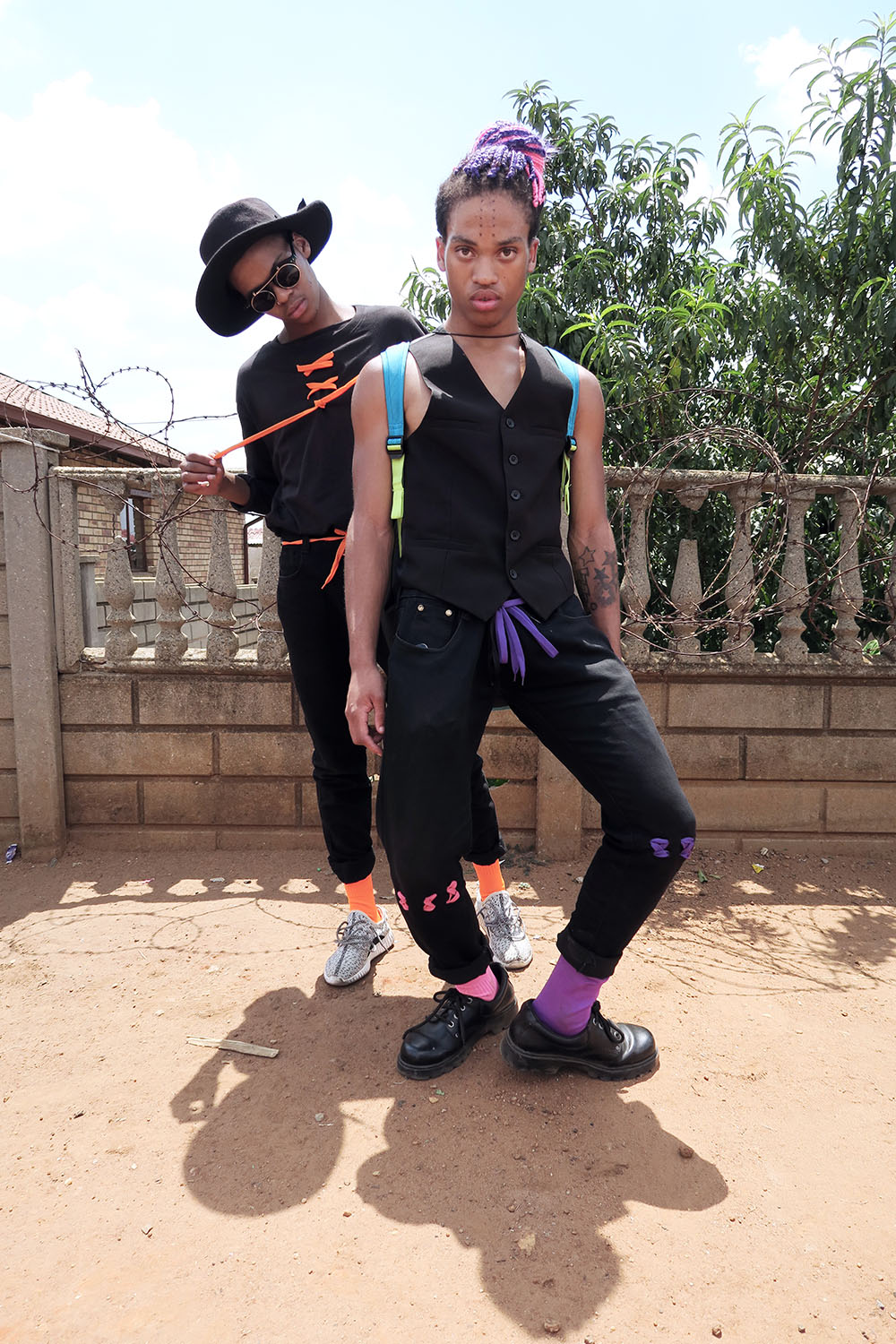Fashion 4 Sho an annual fashion show, now in its third years was held on Sunday the 14th of February in Tembisa, a large township situated in the north-east of Johannesburg. The event has little institutional recognition and no social currency within South African fashion industry circles. But despite being ignored by the mainstream its approach and presentation is actually far closer to the current innovation in international fashion presentation than the more famous South African events.
The event had all the features that currently define an “industry shifting” approach towards fashion presentation. Through the event curation, the organisers and the designers engaged in topical fashion industry conversations such as Gender fluidity and body positive casting, the democratisation of fashion transmission and the reimagining of the traditional runway show model.
Mapungubwe street was blocked off for the event, with two white twin-pole tents running about a hundred metres down the street. Green astroturf was draped over a low platform and flowed onto the runway. A red carpet was laid along the length of the runway and was flanked on either side by black plastic chairs. Where the chairs ended a row of centre-fold tables (also on either side of the runway) continued along the road marking out a second part of the runway intended for designers to exhibit and sell their show pieces directly after the shows when the event transformed into a pop up market.
The British luxury fashion brand Burberry, which is at the vanguard of important shifts in the fashion industry has been experimenting with a similar model in recent years. Burberry makes pieces from its collections available immediately after the runway show, in what they describe as “shop the runway”.
Givenchy is another leading international fashion brand which has been taking similar bold steps, making moves which Women’s Wear Daily suggests “could dramatically change the fashion show system for the long haul”. Givenchy opened their September 11 2015 show to the public, showing an acknowledgement of the change in the way fashion is disseminated, shifting from a hierarchical model where collections are for insiders such as editors and buyers to a democratic model described by Vogue as “open-access entertainment”. For the most part fashion shows in South Africa have existed as a form of entertainment even though concerted efforts have been made by local fashion week organisers for them to reflect the Western commercial system.
Fashion 4 Sho rejected this system outright, exploring further the concept of fashion presentation as performance art. The show started with a sole performer dressed only in a pair of green and and blue color-blocked underpants, sitting still on the platform at the top of the runway with a noose tied around his neck. Then another performer emerged on the opposite end of the runway, reciting a haunting poem as she made her way toward the platform. Behind them, models who had been standing still in a caged trailer began banging on its sides as the recital progressed. Just as the poem reached its climax the models broke through the trailer doors gently spilling onto the platform and then lethargically disappearing down the runway. Where the poet left off the Master of Ceremonies continued with improvisational ad-libs delivered in a raspy rolling voice, adding a futher layer of the fantastic and mysticism to the fashion presentation.
Models of all shapes and sizes were cast to walk the runway, and many of the labels on show presented gender fluid looks such as “Tangz” distressed genderless streetwear pieces, which were modelled by both men and women. At times the idea of gender was subverted altogether with “Yayaz Accessories” a predominantly female targeted jewellery collection shown on men. The New York times describes this as “fashion’s gender blur, the narrowing of the sexual divide” calling it a “seismic shift in fashion, a widening acceptance of a style with no boundaries”.
In the South African fashion industry new practices and ideas are recognized or become legitimate only if they are channeled down from the overseas. It is through a more inclusive system where local fashion media and institutions begin to look at, and start taking the creative production developing outside of established and privileged spaces more seriously, that South Africa can become the place where the agenda is being set.
